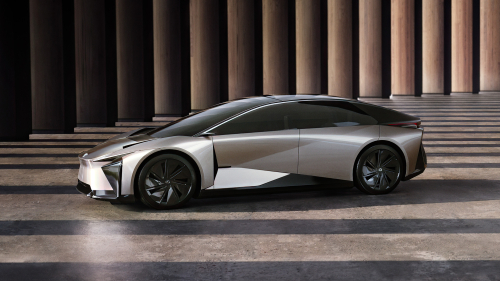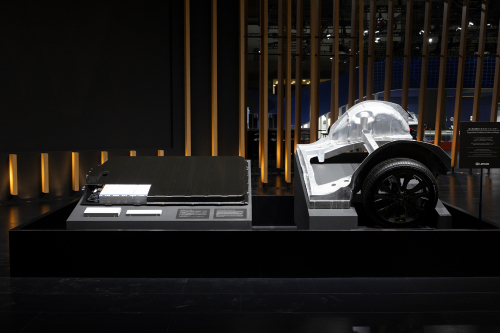At the inaugural Japan Mobility Show 2023, Lexus introduced a range of concept models under the theme “Pushing the Boundaries of the Electrified Experience”, envisioning new possibilities for mobility through electric cars. The Lexus booth hosted the global debut of the next-generation Battery Electric Vehicle (BEV) concept car LF-ZC, set for release in 2026, along with the BEV flagship concept model LF-ZL, which offers a glimpse into the brand's future.

Next-generation Lexus BEVs will achieve more versatile vehicle packaging by minimizing all core components. This translates directly to driving performance, with LF-ZC delivering dynamics leveraging the excellent inertia characteristics of BEVs and building on technologies from Lexus RZ development, such as the seamless drive force control by the all-wheel drive DIRECT4 system and the natural, linear steering feel provided by Steer-by-Wire.
Leveraging a BEV’s more compact powertrain, the aesthetic form with high aerodynamic performance aims for a Cd (Coefficient of drag) value of approximately 0.2. The low hood and cowl lead to an immersive cockpit with an unprecedented, expansive field of vision, allowing drivers to fully engage with the road.
By using next-generation prismatic high-performance batteries, LF-ZC aims to achieve approximately twice the range of conventional BEVs.
Next-Generation Production Technology. Next-generation Lexus BEVs will feature a new modular structure formed through gigacasting, which splits the vehicle body into three parts: front, center, and rear.

Casting provides greater freedom of form, while the integration of parts also increases rigidity, for linear and natural vehicle dynamics. Positioning the battery in the central section of the vehicle body ensures that the front and rear remain structurally independent, enabling the rapid integration of battery advancements into the vehicle and contributing to more agile future development.
The production process introduces a self-driving assembly line, where cars can autonomously move to the next stage of assembly. This enables the vehicle to drive itself with only the battery, motor, tires, and wireless terminal components in the front, center, and rear sections. The elimination of conveyor belts from the production line provides more flexibility in rearranging the factory layout as necessary, enabling a reduction in the production preparation period and significantly reducing factory investment costs for more agile business operations.
LF-ZC and other next-generation BEVs will features advanced high-performance batteries. Made with a prismatic structure, the batteries are engineered to increase range through improved aerodynamic integration and weight reduction, enhancing vehicle efficiency and battery performance.
The low profile of the battery contributes to increased design flexibility for the vehicles, resulting in a more attractive silhouette. Furthermore, it offers a low center of gravity for improved driving dynamics. Additionally, high energy density is achieved by simplifying and compacting the battery structure, allowing for the integration of more energy into the vehicle.